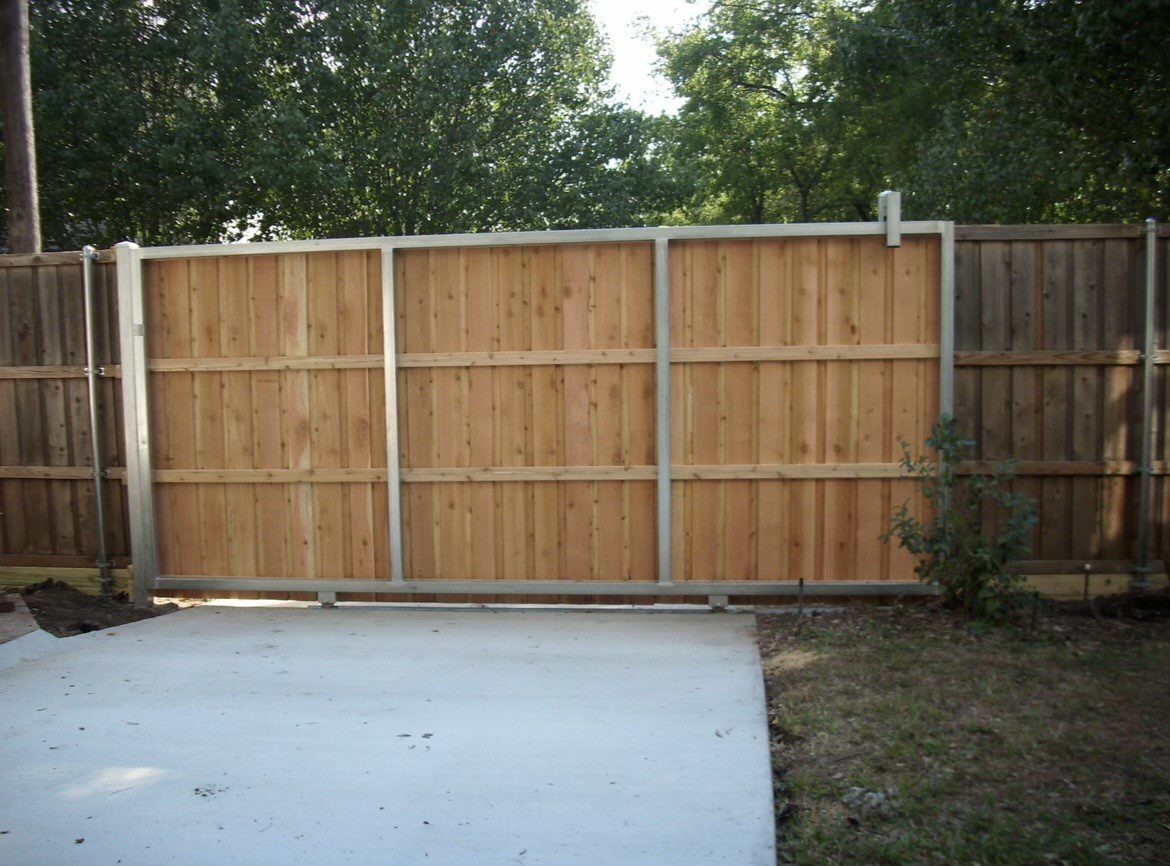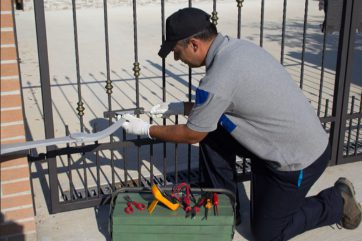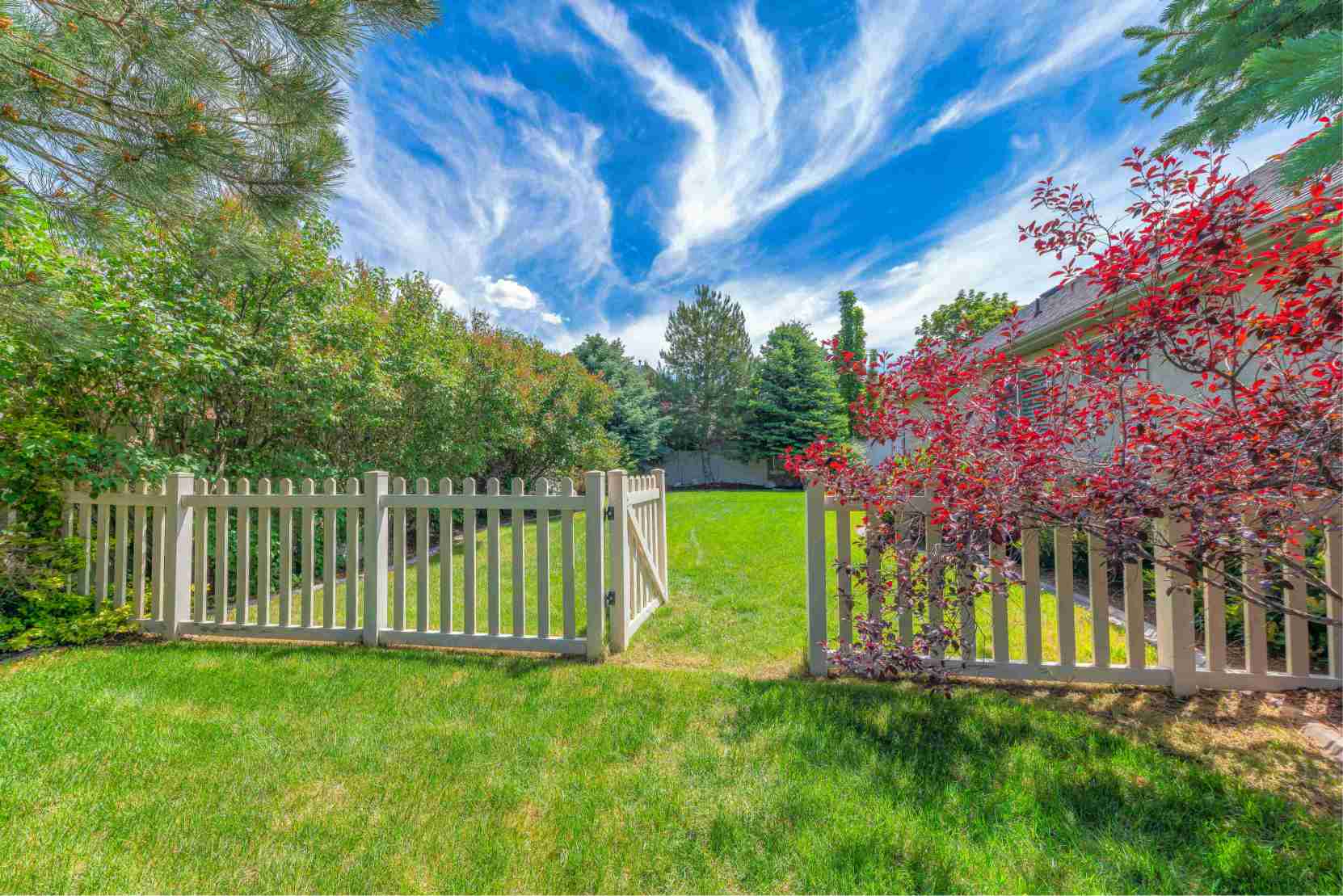Sliding gates are a popular choice in residences for a few excellent reasons. They can enhance security as they’re more difficult to force open. Sliding fence gates are also great space-savers that don’t require tons of clearance to swing open.
Stick with Top Rail Fence to learn the basics of how to build a sliding fence gate. We’ll review what you need and discuss common problems that pop up.
Is it hard to build a sliding fence gate?
Without construction experience, building your own sliding gate can be tricky. The measurements of the gate, the position of the hardware, the evenness of the top rail, and more must be precise.
A sliding gate may not work if one small part of it is slightly off. The average DIY builder should consider it an intermediate task.
How to build a sliding gate for a fence
There are many ways to build a sliding fence gate, but here is a general overview of the process.
1. Plan out your new sliding gate
Carefully measure the opening where you will install the new gate. Decide if you want the gate to slide from inside or outside of the fence. With this, determine the exact measurements of the gate you will build.
Do not plan measurements as though you will make the gate fit flush with each post. Factor in hardware and leave a few inches of ground clearance.
2. Gather tools and materials
Collect everything needed for construction and installation. The exact lineup will vary depending on your design and method. Here’s an example of the tools and materials needed:
- Level
- Tape measure
- Circular saw
- Power drill
- Screwdriver
- Lumber (pressure-treated 2x4s preferred)
- Deck screws
- Sliding gate kit (will include all necessary gate hardware such as screws, casters, latch, tracks, etc.)
3. Build the new gate
Review the instructions on the sliding gate kit so you are building to its specifications. Build the new gate starting with the frame. Check it with the level as you go and be sure to measure diagonally to confirm it’s square.
Carefully mark and pre-drill holes per the instructions for the gate kit’s hardware. Corner pieces and interior brackets from the kit may need to be fitted before proceeding to align the planks that comprise the front, so again, follow those instructions carefully.
TIP: Add diagonal bracing across the back of the gate for enhanced structural stability.
4. Assemble the rails
The remainder of the process will be dependent on the sliding kit, but this is a step that stands out. The top rail in particular requires perfect alignment for the gate to be operational.
Take extra time to ensure all hardware associated with the rail assembly is exact on the opposing posts. Depending on your existing fence, you may have to install an extra piece of wood to accommodate the roller assembly.
5. Install the gate
Slide the new gate into its tracks. Check that the bottom of the gate fits into the track. Secure the remaining hardware to join the gate to the side of the fence it will slide against. Bolts fixed to the end of the rails will keep the gate from sliding out.
Why doesn’t my gate fit?
It is common for homeowners to under-build or overbuild their gates, even if they believe they’ve gotten the measurements correct. An overbuilt gate cannot be salvaged, but a slightly underbuilt one may ultimately work out.
Wood can expand slightly when it settles into the environment but any shrinkage probably won’t be enough to compensate for an overbuild. Plus, it will be nearly impossible to get the tracks to align properly.
In learning how to build a sliding gate for a wood fence, the adage “Measure twice, cut once” is paramount.
Why does my fence gate sag?
The most common reasons that wood gates sag include:
- Poor-quality lumber that has warped
- Poor construction; the gate itself isn’t square
- The hardware isn’t tight enough
- The post hardware and gate hardware are out of alignment
In most cases, a sagging fence gate will not slide properly. Reassembly is usually necessary after troubleshooting the situation.
Why does my sliding gate get stuck?
Existing sliding gates can stick when the track is worn or has buildup or debris stuck in it.
The most common reason new sliding gates stick is that they are not properly aligned. If this is the case with your gate, it must be disassembled and reassembled.
Another important consideration is the ground beneath the gate. Since most homeowners install these gates in their driveways, the ground is usually reasonably level. If it is not, the gate isn’t likely to function smoothly. Always install gates over level ground with enough clearance that they will not drag or scrape surfaces.
How do you fix a sliding gate track?
If the casters are coming off the track or the gate is sticking when you attempt to use it, close the gate and grab a measuring tape. Measure the gap between the posts and the gate on both sides. These numbers should match. If they do not, the gate must be reinstalled.
If the distance between the post and the gate matches, check the hardware for any loose parts.
Top Rail can help you craft a smooth new sliding gate
Learning how to build a sliding gate for a fence is easier in theory than in practice. The slightest oversights can have a huge impact on the outcome.
Eliminate the learning curve and go straight to an expert. Top Rail Fence specializes in safe, functional gates for all fences. Best of all, we’re there at every stage. We can help you design your entry, review your permit requirements, secure all of the materials, and install the new gate on your schedule. We’ll also ensure the gate is properly aligned, fully functional, and meets your standards.
Contact us today to start your free estimate.




